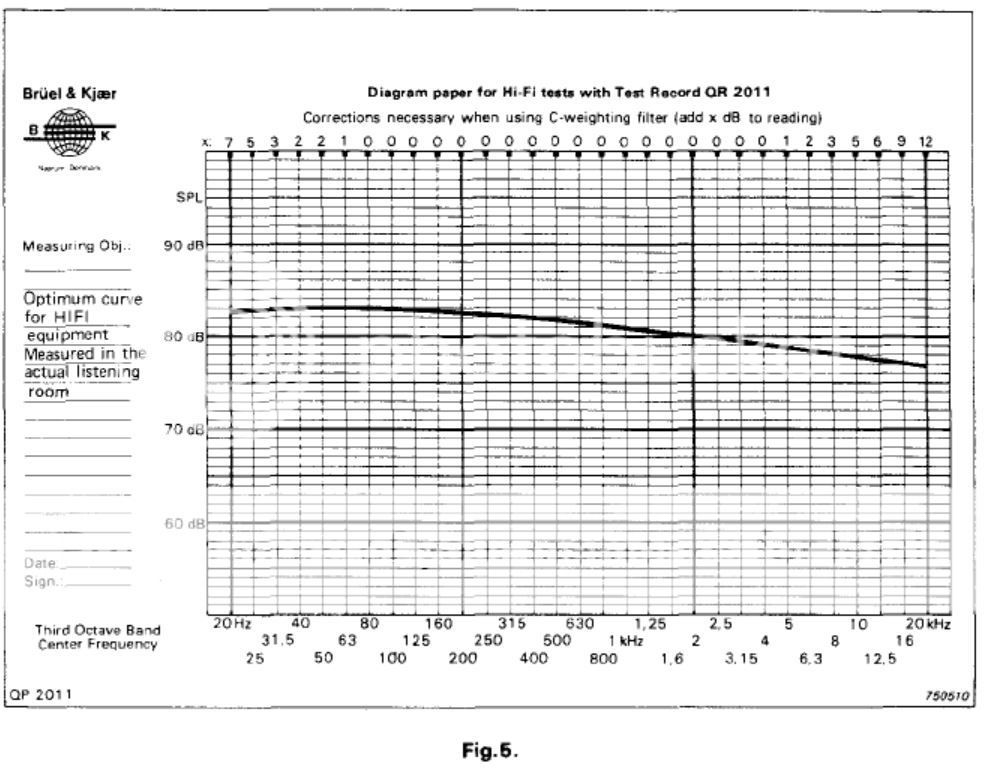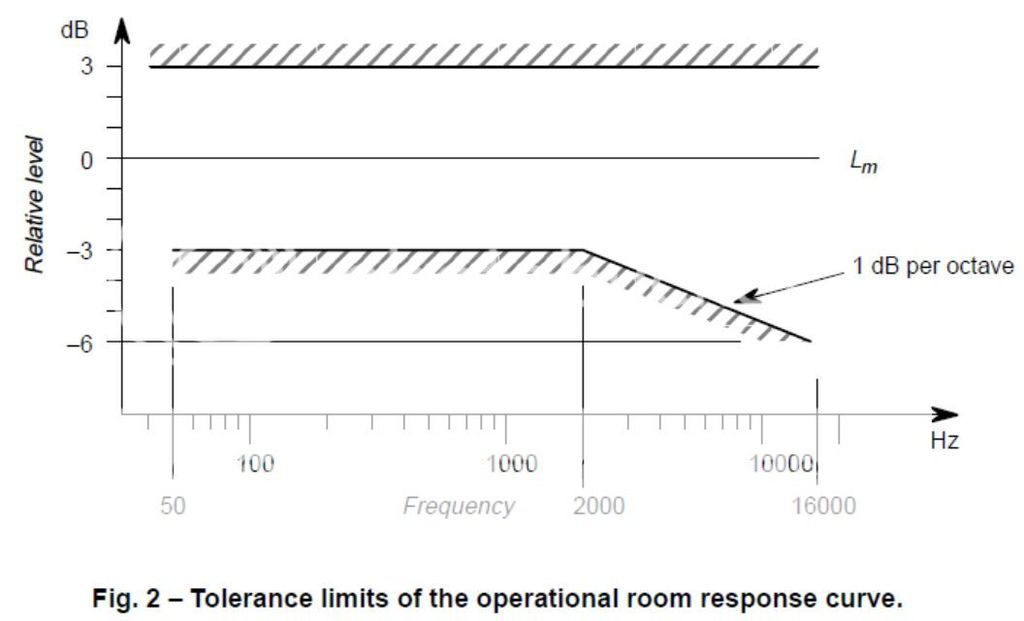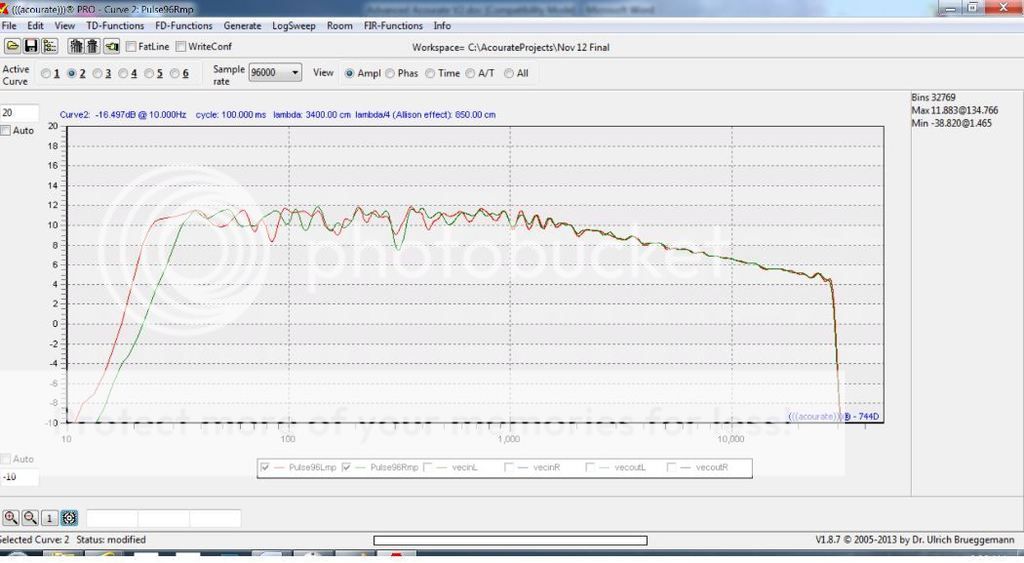Hi,
Adding to what Yogibear said.
From
https://www.diyaudio.com/forums/multi-way/271119-smooth-flat-vs-accurate-hi-fidelity-4.html
In 1974 B&K wrote an interesting paper
http://www.bksv.com/doc/17-197.pdf called, “Relevant loudspeaker tests in studios in Hi-Fi dealers' demo rooms in the home etc. using 1/3 octave, pink-weighted, random noise” From their research, the most preferred in-room frequency response at the listening position is flat to 200 Hz, -3db at 2 kHz and -6db at 20 kHz.See Figure 5 in the paper:

As an ex 10 year recording and mixing engineer, the above graph in Figure 5 became known widely as the B&K curve.Most pro recording facilities from that point on had at least one set of control room monitors that were eq’d to the B&K curve. Given all things equal, the curve produced a perceptually flat frequency response at the mixer’s listening position.Meaning no-one frequency stood out over the other, and from our ear/brain perception, it sounds like it is a flat frequency response.
In 1998, the European Broadcast Union produced a Tech note (EBU-Tech 3276) called, “Listening conditions for the assessment of sound programme material: monophonic and two–channel stereophonic”.
https://tech.ebu.ch/docs/tech/tech3276.pdf Again from a frequency response perspective, the recommendation was to have a flat frequency response out to 2 kHz with flat 1 db per octave rolloff.See Fig 2 on Page 6:

Again, very similar to the B&K curve.Fast forward to today and if one spends anytime on forums such as REW, Audiolense or Acourate, one finds out fairly quickly that indeed the target frequency response that provides the most perceptually flat (accurate?) listening experience at the listening position is still very similar to the original B&K house curve.
In my case, I use Acourate DSP and can shape the frequency response at the listening position any way I want with incredible precision (64 bit resolution). After trying and listening to dozens of frequency response targets, I have ended up with something very similar: flat to 1 kHz, and using 1 kHz as a hinge point, a straight line to -6 dB at 20 kHz. Many on the forums I have listed above use the same or very similar frequency response target and really is not much of a variant compared to the B&K curve some 40 years ago:






